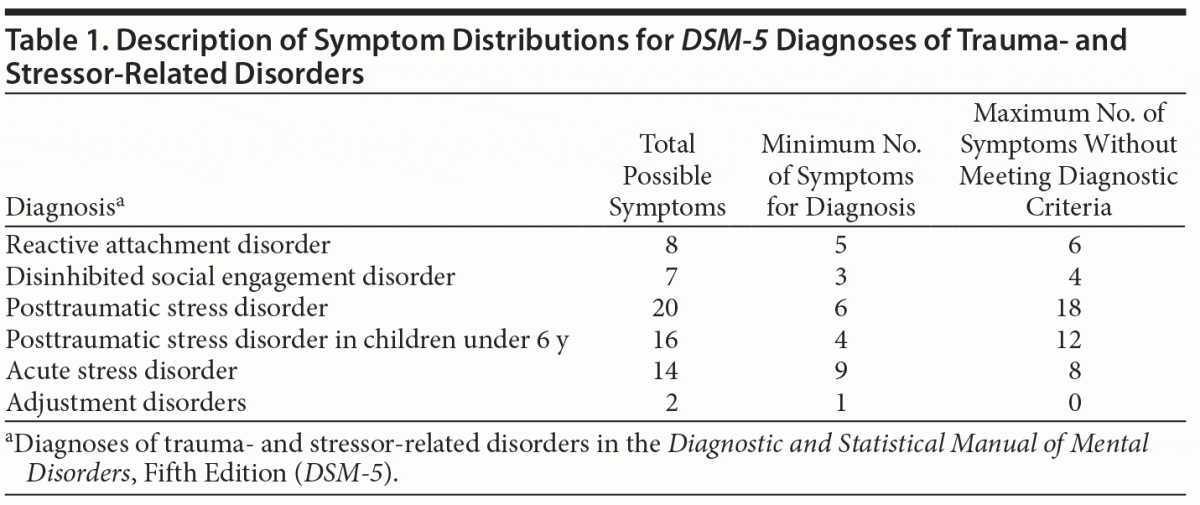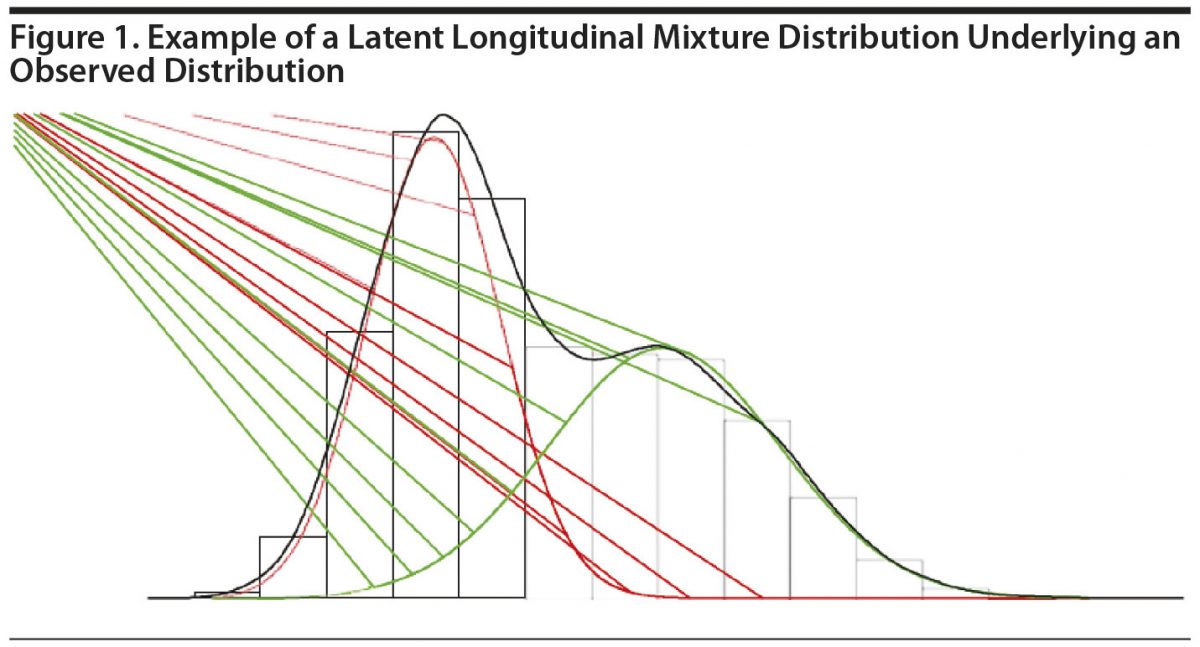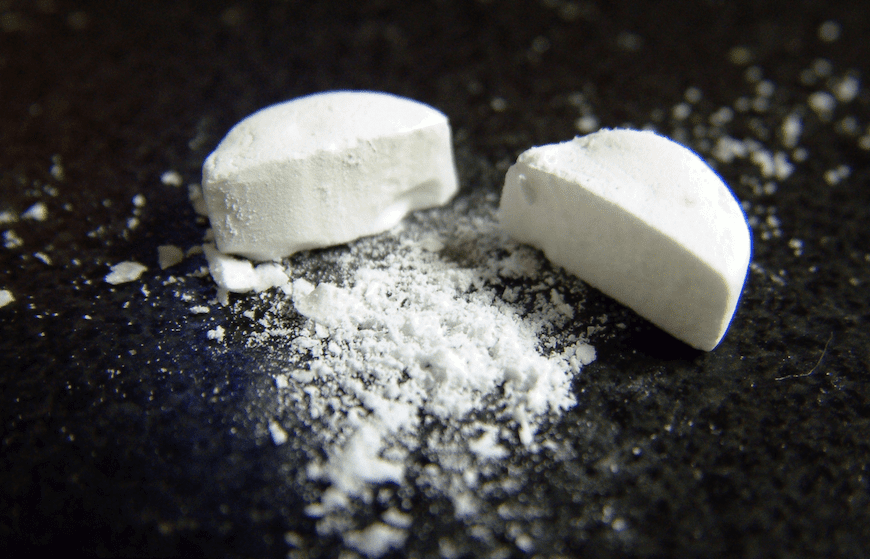Empirical Characterization of Heterogeneous
Posttraumatic Stress Responses Is Necessary to
Improve the Science of Posttraumatic Stress
Submitted: July 10, 2014; accepted July 11, 2014.
Corresponding author: Isaac R. Galatzer-Levy, PhD, NYU School of Medicine, Department of Psychiatry, 1 Park Ave. 8th Floor, New York, NY 10016 ([email protected]).
J Clin Psychiatry 2014;75(9):e950–e952 (doi:10.4088/JCP.14com09372).
© Copyright 2014 Physicians Postgraduate Press, Inc.
The concept of posttraumatic stress psychopathology is simple and intuitive: following a highly distressing event, some people develop sustained aversive responses that dominate their lives, causing overwhelming distress and havoc in their emotional, cognitive, behavioral, and interpersonal functioning. Despite the conceptual simplicity of posttraumatic stress, a decisive definition of the concept seems out of reach. The posttraumatic stress disorder (PTSD) diagnosis differs both between international standards (ie, International Classification of Diseases) and the US standards (Diagnostic and Statistical Manual of Mental Disorders [DSM]) and across iterations of these manuals.1 Further, DSM-5 offers a total of 6 posttraumatic and stress-related pathologies, including PTSD, PTSD in children under 6 years, reactive attachment disorder, disinhibited social engagement disorder, acute stress disorder, and adjustment disorders, and the inclusion of a seventh (complicated grief) was hotly debated.2,3 Finally, other disorders such as substance abuse and depression have traditionally been thought of as “comorbidities,” but appear to be themselves posttraumatic stress responses.4
Why does the divide between conceptual simplicity and working definitions matter? For researchers interested in understanding causes, modifiers, or outcomes associated with a construct, narrow, accurate, and consistent definitions of all variables, including the outcome variable, are necessary. Karl Pearson stated, “Scientific discovery and the accumulation of information about the physical world is one thing; accurate, clear, and coherent summary . . . is quite another.”5 There is a significant lack of coherence in the existing definitions of posttraumatic stress reactions. If we examine the current DSM-5 chapter “Trauma- and Stressor-Related Disorders,” we can easily observe that, in the majority of cases, an individual can have more symptoms than the number required for diagnosis and still not meet diagnostic status because of seemingly arbitrary categorical rules. Even in cases where this is not true, such as acute stress disorder, the difference between health and pathology can be a single symptom (Table 1). One individual can potentially have 3 times the symptoms of someone diagnosed with PTSD and be labeled “healthy.” In this framework, the distribution of symptom severity is inconsistent with the distribution of caseness.

Posttraumatic stress is a construct. The clinical validity of this construct is not in dispute, as posttraumatic stress is routinely observed following an infinite number of possible discrete potentially traumatic events. However, the method for measuring this construct is intensely debated.6–11 Latent (not directly observable) variable modeling is a powerful tool for measuring and analyzing constructs by modeling key conceptual characteristics such as the distribution of scores (for example, symptom scores) and their change over time.12,13 In this framework, populations are characterized by identifying mixture distributions (Figure 1). This approach is of great value, as it can identify existing populations based on shared distributions rather than subpopulations defined by a priori symptom classifications. Latent growth mixture modeling (LGMM), the method used to identify trajectories in Andersen et al,14 provides a framework for characterizing distinct populations based on their symptom severity over time. Interestingly, when examining different symptom indicators such as depression and anxiety in the same population, there is significant overlap in identified trajectories and membership in those trajectories. Thus, while the variables may be distinct, the populations they are measuring may not be.15 For example, factor analysis may show that there are distinct PTSD symptom clusters, but individuals who have high scores in 1 cluster tend to have concordantly high scores in the others.

In contrast to the lack of coherence in diagnostic definitions, researchers have identified common patterns of stress response across different indicators using the LGMM approach (ie, PTSD, depression, general distress, functioning) in response to diverse potentially traumatic events15–34 and even in translational animal models of threat (fear) learning.35 Across studies, consistent patterns of resilience, recovery, and chronic stress have been identified. The LGMM approach has significant promise for characterizing common clinically relevant, transdiagnostic posttraumatic stress responses. The employment of such methods will most likely have downstream consequences in terms of scientific discovery, as models that better capture the empirical reality provide more accurate and reproducible results compared to noisy, a priori diagnostic categories.
Author affiliation: Department of Psychiatry, NYU School of Medicine,
New York University, New York.
Potential conflicts of interest: None reported.
Funding/support: Funding for this commentary was received from
National Institute of Mental Health grant 1K01MH102415-01A1.
REFERENCES
1. Galatzer-Levy IR, Bryant RA. 636,120 ways to have posttraumatic stress disorder. Perspect Psychol Sci. 2013;8(6):651–662. doi:10.1177/1745691613504115
2. Shear MK, Simon N, Wall M, et al. Complicated grief and related bereavement issues for DSM-5. Depress Anxiety. 2011;28(2):103–117. doi:10.1002/da.20780 PubMed
3. Prigerson HG, Maciejewski PK. A call for sound empirical testing and evaluation of criteria for complicated grief proposed for DSM-V. OMEGA–J Death Dying. 2006;52(1):9–19. doi:10.2190/ANKH-BB2H-D52N-X99Y
4. Galatzer-Levy IR, Nickerson A, Litz BT, et al. Patterns of lifetime PTSD comorbidity: a latent class analysis. Depress Anxiety. 2013;30(5):489–496. doi:10.1002/da.22048 PubMed
5. Pearson K. The Grammar of Science. 2nd ed. London, UK: Adam and Charles Black; 1900.
6. Bonanno GA. Loss, trauma, and human resilience: have we underestimated
the human capacity to thrive after extremely aversive events? Am Psychol. 2004;59(1):20–28. doi:10.1037/0003-066X.59.1.20 PubMed
7. Cox BJ, Clara IP, Enns MW. Posttraumatic stress disorder and the structure of common mental disorders. Depress Anxiety. 2002;15(4):168–171. doi:10.1002/da.10052 PubMed
8. de Jongh A, Olff M, van Hoolwerff H, et al. Anxiety and post-traumatic stress symptoms following wisdom tooth removal. Behav Res Ther. 2008;46(12):1305–1310. doi:10.1016/j.brat.2008.09.004 PubMed
9. Marshall RD, Olfson M, Hellman F, et al. Comorbidity, impairment,
and suicidality in subthreshold PTSD. Am J Psychiatry. 2001;158(9):1467–1473. doi:10.1176/appi.ajp.158.9.1467 PubMed
10. McNally RJ. Can we fix PTSD in DSM-V? Depress Anxiety. 2009;26(7):
597–600. doi:10.1002/da.20586 PubMed
11. Shevlin M, Elklit A. The latent structure of posttraumatic stress disorder: different models or different populations? J Abnorm Psychol. 2012;121(3):610–615. doi:10.1037/a0028591 PubMed
12. Kline RB. Principles and Practice of Structural Equation Modeling. New York, NY: Guilford Press; 2011.
13. Duncan TE, Duncan SC, Strycker LA. An Introduction to Latent Variable Growth Curve Modeling: Concepts, Issues, and Applications. 2nd ed. Mahwah, NJ: Lawrence Erlbaum Associates; 2006.
14. Andersen SB, Karstoft K-I, Bertelsen M, et al. Latent trajectories of trauma symptoms and resilience: the 3-year longitudinal prospective USPER study of Danish veterans deployed in Afghanistan. J Clin Psychiatry. 2014;75(9):1001–1008.
15. Bonanno GA, Kennedy P, Galatzer-Levy IR, et al. Trajectories of resilience, depression, and anxiety following spinal cord injury. Rehabil Psychol. 2012;57(3):236–247. doi:10.1037/a0029256 PubMed
16. Bonanno GA, Boerner K, Wortman CB. Trajectories of grieving. In: Stroebe M, Hansson R, Schut H, et al, eds. Handbook of Bereavement Research and Practice: Advances in Theory and Intervention. Washington, DC: American Psychiatric Association; 2008:287–308.
17. Bonanno GA, Ho SM, Chan JC, et al. Psychological resilience and dysfunction among hospitalized survivors of the SARS epidemic in Hong Kong: a latent class approach. Health Psychol. 2008;27(5):659–667. doi:10.1037/0278-6133.27.5.659 PubMed
18. Bonanno GA, Mancini AD, Horton JL, et al; Millennium Cohort Study Team. Trajectories of trauma symptoms and resilience in deployed US military service members: prospective cohort study. Br J Psychiatry. 2012;200(4):317–323. doi:10.1192/bjp.bp.111.096552 PubMed
19. deRoon-Cassini TA, Mancini AD, Rusch MD, et al. Psychopathology and resilience following traumatic injury: a latent growth mixture model analysis. Rehabil Psychol. 2010;55(1):1–11. doi:10.1037/a0018601 PubMed
20. Galatzer-Levy IR, Bonanno GA. Beyond normality in the study of bereavement: heterogeneity in depression outcomes following loss in older adults. Soc Sci Med. 2012;74:1987–1994. PubMed
21. Galatzer-Levy IR, Bonanno GA. Heterogeneous patterns of stress over the four years of college: associations with anxious attachment and ego-resiliency. J Pers. 2013;81(5):476–486. doi:10.1111/jopy.12010 PubMed
22. Galatzer-Levy IR, Bonanno GA, Mancini AD. From marianthal to latent growth mixture modeling: a return to the exploration of individual differences in response to unemployment. J Neuroscience Psychology Econ. 2010;3(2):116–125. doi:10.1037/a0020077
23. Galatzer-Levy IR, Burton CL, Bonanno GA. Coping flexibility, potentially traumatic life events, and resilience: a prospective study of college student adjustment. J Soc Clin Psychol. 2012;31(6):542–567. doi:10.1521/jscp.2012.31.6.542
24. Galatzer-Levy IR, Mazursky H, Mancini AD, et al. What we don’t expect when expecting: evidence for heterogeneity in subjective well-being in response to parenthood. J Fam Psychol. 2011;25(3):384–392. doi:10.1037/a0023759 PubMed
25. Lam WWT, Bonanno GA, Mancini AD, et al. Trajectories of psychological distress among Chinese women diagnosed with breast cancer. Psychooncology. 2010;19(10):1044–1051. doi:10.1002/pon.1658 PubMed
26. Zhu Z, Galatzer-Levy IR, Bonanno GA. Heterogeneous depression responses to chronic pain onset among middle-aged adults: a prospective study. Psychiatry Res. 2014;217(1–2):60–66. doi:10.1016/j.psychres.2014.03.004 PubMed
27. Galatzer-Levy IR, Ankri Y, Freedman S, et al. Early PTSD symptom trajectories: persistence, recovery, and response to treatment: results from the Jerusalem Trauma Outreach and Prevention Study (J-TOPS). PLoS ONE. 2013;8(8):e70084. doi:10.1371/journal.pone.0070084 PubMed
28. Galatzer-Levy IR, Brown AD, Henn-Haase C, et al. Positive and negative emotion prospectively predict trajectories of resilience and distress among high-exposure police officers. Emotion. 2013;13(3):545–553. doi:10.1037/a0031314 PubMed
29. Galatzer-Levy IR, Madan A, Neylan TC, et al. Peritraumatic and trait dissociation differentiate police officers with resilient versus symptomatic trajectories of posttraumatic stress symptoms. J Trauma Stress. 2011;24(5):557–565. doi:10.1002/jts.20684 PubMed
30. Galatzer-Levy IR, Steenkamp MM, Brown AD, et al. Cortisol response to an experimental stress paradigm prospectively predicts long-term distress and resilience trajectories in response to active police service. J Psychiatr Res. 2014;56:36–42. doi:10.1016/j.jpsychires.2014.04.020 PubMed
31. Armour C, Shevlin M, Elklit A, et al. A latent growth mixture modeling approach to PTSD symptoms in rape victims. Traumatology. 2012;18(1):20–28. doi:10.1177/1534765610395627 PubMed
32. Orcutt HK, Bonanno GA, Hannan SM, et al. Prospective trajectories of posttraumatic stress in college women following a campus mass shooting. J Trauma Stress. 2014;27(3):249–256. doi:10.1002/jts.21914 PubMed
33. Pielmaier L, Milek A, Nussbeck FW, et al. Trajectories of posttraumatic stress symptoms in significant others of patients with severe traumatic brain injury. J Loss Trauma. 2013;18(6):521–538. doi:10.1080/15325024.2012.719342
34. Berntsen D, Johannessen KB, Thomsen YD, et al. Peace and war: trajectories of posttraumatic stress disorder symptoms before, during, and after military deployment in Afghanistan. Psychol Sci. 2012;23(12):1557–1565. doi:10.1177/0956797612457389 PubMed
35. Galatzer-Levy IR, Bonanno GA, Bush DE, et al. Heterogeneity in threat extinction learning: substantive and methodological considerations for identifying individual difference in response to stress. Front Behav Neurosci. 2013;7:55. doi:10.3389/fnbeh.2013.00055 PubMed




